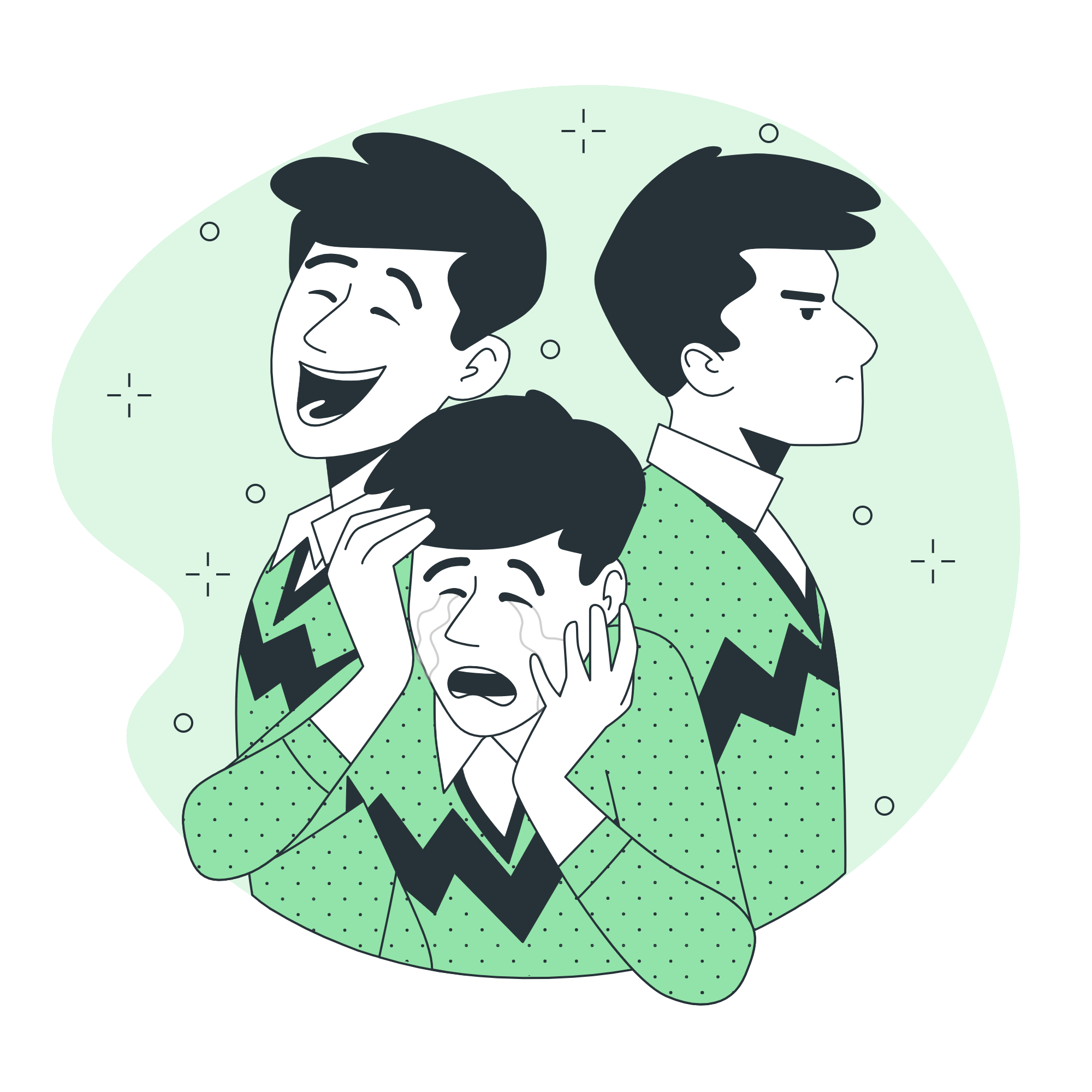Personality Disorders
Like all mental illnesses, a personality disorder disrupts a person’s life.

Personality disorders are deeply ingrained, rigid ways of thinking and behaving that result in impaired relationships with others and often cause distress for the individual who experiences them. Many mental health professionals formally recognize 10 disorders that fall into three clusters, although there is known to be much overlap between the categories.
Cluster A disorders are characterized by odd or eccentric patterns of thinking, such as extreme social detachment, distrust, or unusual beliefs.
Paranoid personality disorder, which involves pervasive distrust and suspicion of others
Schizoid personality disorder, which involves detachment and limited emotion in social contexts
Schizotypal personality disorder, which features difficulty with close relationships along with abnormal thinking and behavior patterns
Cluster B disorders feature unstable emotional states and erratic behavior, which can involve aggression toward or manipulation of others.
Antisocial personality disorder, which involves disregard for others and often impulsiveness and aggression
Borderline personality disorder, marked by instability in one’s relationships, emotions, and sense of self, and impulsiveness
Histrionic personality disorder, which involves over-the-top expressiveness and attention-seeking
Narcissistic personality disorder, often involving an unusually strong desire for admiration, an inflated self-image, and lack of empathy
Cluster C disorders involve anxious or fearful patterns of thinking and relating to others.
Avoidant personality disorder, characterized by avoidance of social closeness and fear of what others think
Dependent personality disorder, which involves a tendency to become overly reliant on others and afraid to disrupt relationships
Obsessive-compulsive personality disorder, marked by a rigid fixation on details and personally held standards
Understanding Personality Disorders
Signs of a personality disorder usually appear by late adolescence or early adulthood. Although the disorders grouped within each cluster have similar symptoms and traits, one person may not have the exact same symptoms as another person with the same diagnosis, nor exhibit symptoms to the same degree. People who exhibit symptoms of a personality disorder may be unaware that they do so because they perceive their own distorted thought processes, emotional responses, and behaviors as normal.
What is a personality disorder?
A personality disorder is a long-term set of tendencies in one’s thinking and behavior that impair the person’s functioning in the world. While personality disorders are commonly described in terms of distinct categories, research suggests that, for the most part, they reflect various combinations of multiple underlying personality traits, including extreme levels of traits that all people have.
How can you tell if someone has a personality disorder?
While the signs of a personality disorder—characteristics like lack of empathy and remorse, or consistently chaotic relationships with others—may be evident to many people in someone’s life, only a clinical professional, such as a clinical psychologist or psychiatrist, can make an official determination that the person meets the criteria for a personality disorder.
Personality Disorders : Frequently Asked Questions
Personality disorders are mental illnesses that affect a person’s ability to form and keep relationships, develop healthy behavior patterns, adapt to the demands of life, and function well each day.
They can be. The genes you inherit from your family may make you vulnerable to developing a personality disorder, and the environmental and social situations you experience can trigger that development.
There is no known cure for personality disorders as of now, but there are effective treatment methods such as therapy, lifestyle changes, and medications for those who struggle with these conditions.
Research has identified a number of factors including genetics, trauma, abuse, and an unstable or chaotic family life that are usually present during the development of personality disorders.
Depending on the type of disorder, the first signs can be mood swings, depression, withdrawing socially, difficulty in having relationships, a decline in physical health, and having suicidal ideations.
Personality disorders typically emerge in adolescence and if they go undiagnosed, continue into adulthood. Without treatment, personality disorders can worsen and potentially become life-threatening.
Talk to someone who can help. MindWell is your online resource for finding the right mental health professionals to deal with personality disorders, and other related mental health issues.
Let’s talk about your specific needs.
